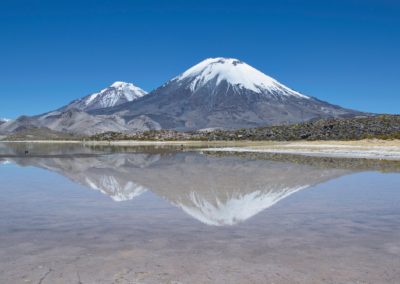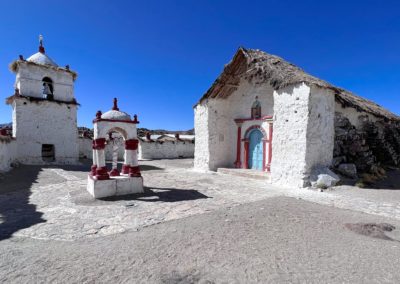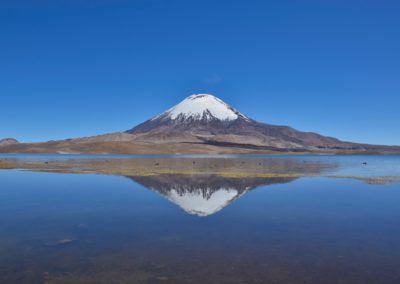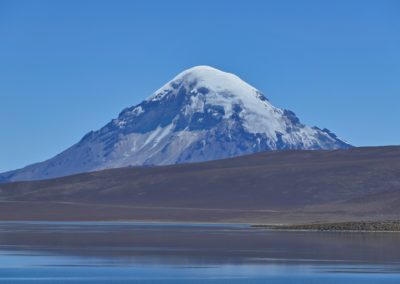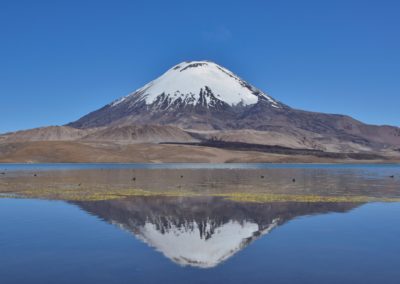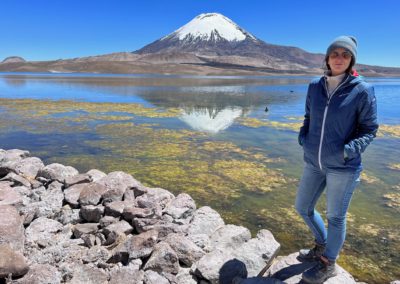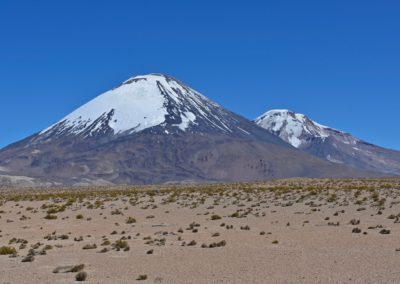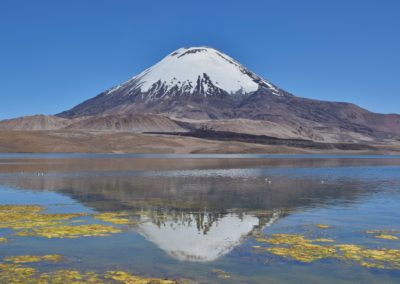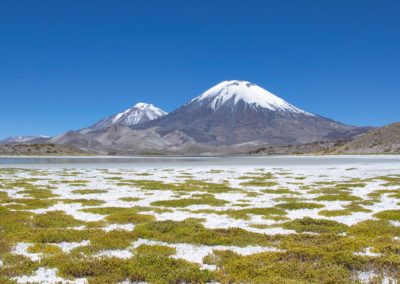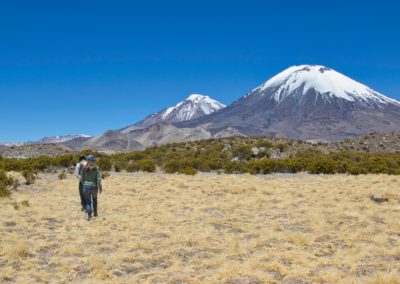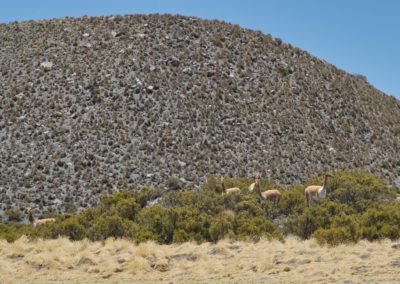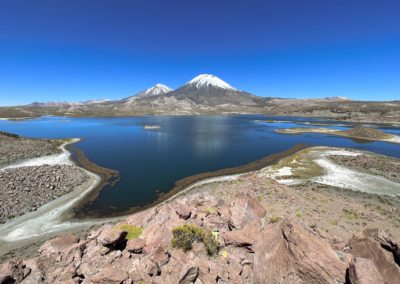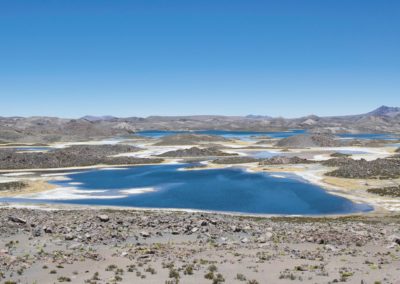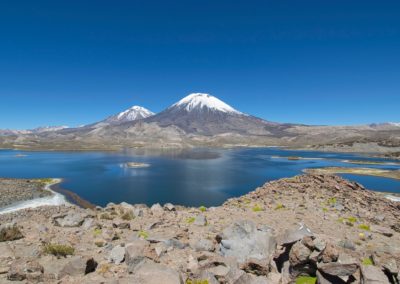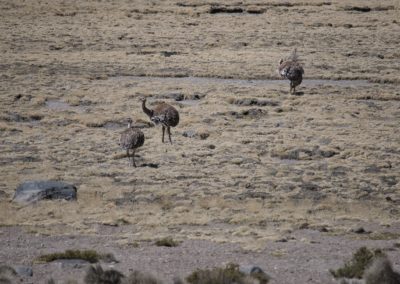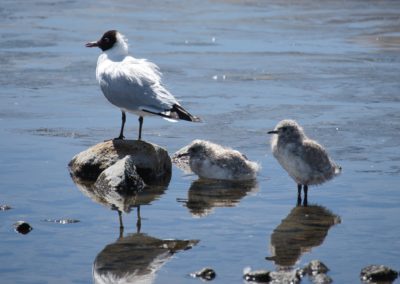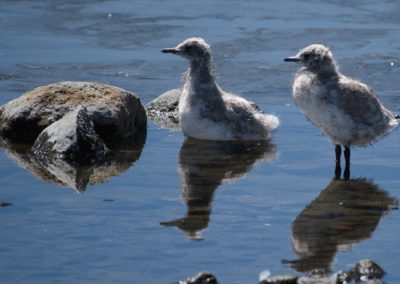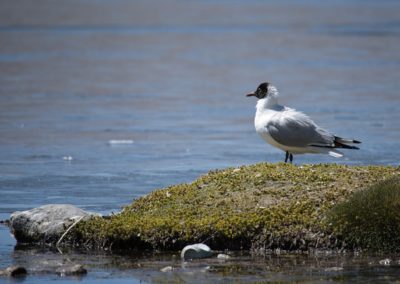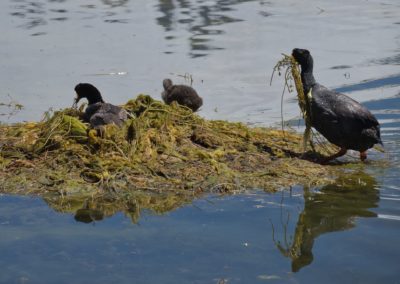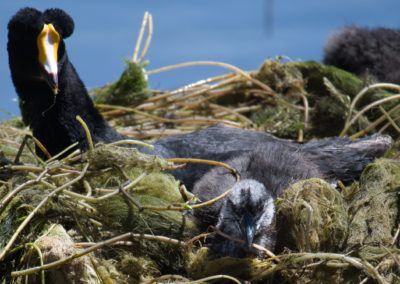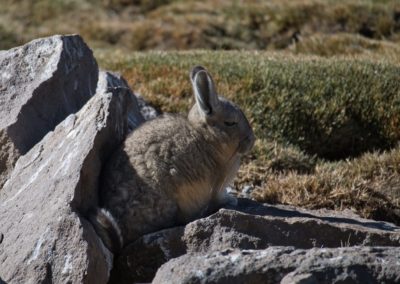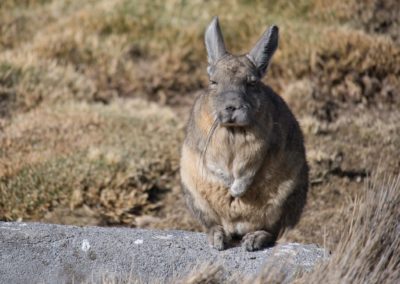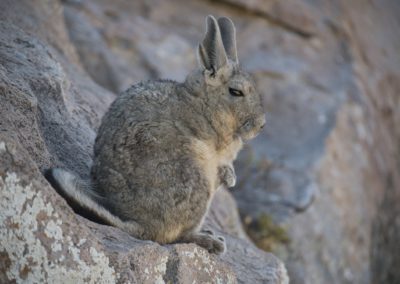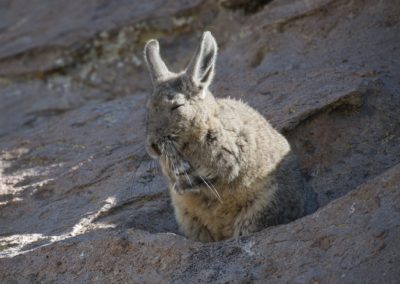LAUCA NATIONAL PARK
Lauca National Park
November 2022
After forty days in Bolivia, we cross the border into Chile at the edge of Sajama National Park. We immediately find ourselves in the next nature reserve, Lauca National Park. Jiron, our friendly and attentive host from Putre, in whose hotel we will spend the next night, is waiting for us at the border and takes us on an impressive journey through the national park.
Lauca National Park
A neighbor of Bolivia’s Sajama National Park, Lauca National Park is Chile’s northernmost nature reserve and a UNESCO Biosphere Reserve. Despite its unique natural landscape and varied fauna, few tourists go there. Travelers from Bolivia usually choose to cross the border near San Pedro de Atacama and overlook Lauca National. The access to the park from the west, from the Chilean coastal town of Arica located approximately 150 km away, is very challenging due to the significant difference in altitude. It is extremely difficult to acclimatize properly to the high altitude of the nature reserve, situated at an elevation of 4’500 meters above sea level.
With Jiron, we have an extremely friendly and competent guide at our side. He knows the park inside out and is one of the only guides in the region. The highlights of our trip are undoubtedly the discovery of Lago Chungará, the many vizcachas we see and the hike to Laguna Cotacotani. We also stop for a short visit to the small village of Parinacota and see many animals throughout the day.
Our highlights
Numerous volcanoes
Lago Chungará
Laguna Cotacotani
Chilean high plateau
Low tourist numbers
Numerous vizcachas
Park wildlife
Lago Chungará
We make our first stop a few kilometers after the border, at Lake Chungará. At an altitude of 4’517 meters, it is one of the highest lakes in the world. We stop at two different points to take in the magnificent panorama and soak up the atmosphere. In the background, snow-covered volcanoes over 6’000 meters high line up. On our right is the Guallatiri volcano (6071m), which is still active and last erupted in 1960. On our left is the Sajama volcano, Bolivia’s highest peak at 6542m. And finally, Parinacota, 6342m high, perfectly reflected in the water, while in the foreground a herd of llamas graze, indifferent to the scenery. We can also observe many species of birds on the lake, for example right before our eyes a pair of Andean ducks building a nest on the water to provide a home for their offspring.
Our highlights
Volcanic scenery
Parinacota volcano
Sajama volcano
Guallatiri volcano
Lago Chungará
Llamas & vicuñas
Birdwatching
Laguna Cotacotani
Laguna Cotacotani lies just four kilometers from Lago Chungará. This magnificent lagoon is made up of different bodies of water, partly separated from each other, which reveal different colors depending on their mineral and algae content.
We take a short hike through this natural paradise. There are no hiking trails here, so we walk across the natural plain to a viewpoint our guide Jiron knows. On our way, we come across several groups of vicuñas, and flamingos fly just above the surface of the water, where many other bird species can be found. The twin volcanoes Pomerape (6282 m) and Parinacota (6342 m) loom prominently in the background. Truly heavenly conditions we find in this corner of unspoilt nature.
Our highlights
Hike to the viewpoint
Unspoilt nature
Fauna & flora
View of the lagoons
Twin volcanoes
Wildlife
The Lauca National Park, at an altitude of over 4’500 meters, is home to a wide range of animal species. It alone is home to over 140 different bird species. The classic inhabitants of the Andean highlands, vicuñas, llamas and guanacos, are also numerous. If you are lucky, you may also spot Andean condors or pumas. Our long day ends with a short walk near Las Cuevas, where we are lucky enough to see dozens of pretty vizcachas.
Our highlights
Vicuñas
Vizcachas
Flamingos
Wide variety of birds




